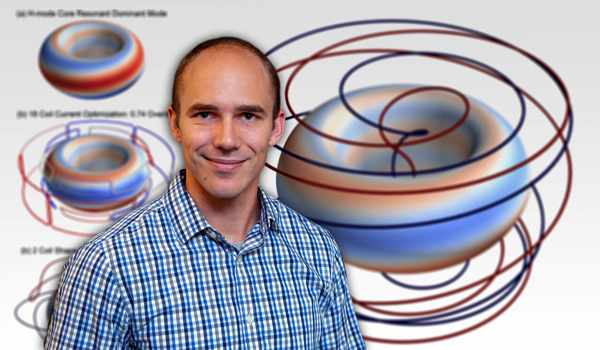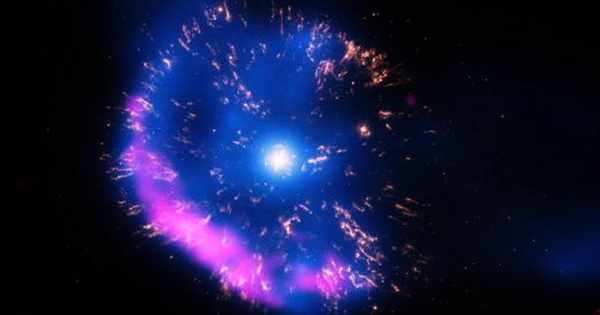Scientists have transferred a technique from one field of plasma physics to another to enable the more efficient design of powerful magnets for tokamaks, which are doughnut-shaped fusion facilities.
Physicists, like bees, can cross-pollinate, taking ideas from one field and applying them to make breakthroughs in others. Scientists at the U.S. Department of Energy’s (DOE) Princeton Plasma Physics Laboratory (PPPL) have transferred a technique from one realm of plasma physics to another to enable the more efficient design of powerful magnets for tokamaks, doughnut-shaped fusion facilities. Plasma, the fourth state of matter that makes up 99 percent of the visible universe and fuels fusion reactions, is contained and controlled by such magnets.
It’s not easy to design these magnets, especially when they have to be precisely shaped to create complex, three-dimensional magnetic fields to control plasma instabilities. So it’s fitting that the new technique comes from scientists who work on stellarators, cruller-shaped fusion devices that necessitate such precise magnet construction. In other words, PPPL scientists are using stellarator computer code to simulate the shape and strength of twisted tokamak magnets capable of stabilizing tokamak plasmas and withstanding the extreme conditions expected in a fusion reactor.
This insight could make it easier to build tokamak fusion facilities that harness the power of the sun and stars. “It was a journey of discovery in the past,” said Nik Logan, a physicist at the DOE’s Lawrence Livermore National Laboratory who led the research while at PPPL. “You had to build something, test it, and use the results to figure out how to design the next experiment. We can now use these new computational tools to more easily design these magnets, based on principles gleaned from years of scientific research.” The findings were published in the journal Nuclear Fusion.
Scientists have transferred a technique from one realm of plasma physics to another to enable the more efficient design of powerful magnets for doughnut-shaped fusion facilities known as tokamaks.
Fusion, the energy source that powers the sun and stars, combines light elements in the form of plasma, a hot, charged state of matter composed of free electrons and atomic nuclei that generates massive amounts of energy. Scientists are attempting to replicate fusion on Earth in order to generate an almost infinite supply of power for electricity generation.
The findings could help tokamak construction by compensating for the imprecision that occurs when a machine is translated from a theoretical design to a real-life object, or by using precisely controlled 3D magnetic fields to suppress plasma instabilities. “The reality is that nothing is perfect,” Logan said. “It has a few minor flaws. The magnets we are developing using this stellarator technique can correct some of the irregularities in magnetic fields as well as control instabilities.” This helps the magnetic field stabilize the plasma, preventing potentially damaging bursts of heat and particles.

Logan and colleagues also discovered that these magnets could act on the plasma even when placed several meters away from the tokamak’s walls. “That’s great news because the closer the magnets are to the plasma, the more difficult it is to design them to withstand the harsh conditions near fusion reactors,” Logan explained. “The further away from the tokamak we can place equipment, the better.”
FOCUS, a computer code developed primarily by PPPL physicist Caoxiang Zhu, a stellarator optimization scientist, is used in the technique to design complex magnets for stellarator facilities. “Nik Logan stopped by my poster presentation at an American Physical Society conference when I was first building FOCUS as a postdoctoral fellow at PPPL,” Zhu said. “We later discussed it and realized that there was an opportunity to apply the FOCUS code to tokamak projects.”
It’s exciting to see how different subfields are collaborating. “I’m pleased to see that my code can be extended to a wider range of experiments,” Zhu said. “I think this is a lovely link between the tokamak and stellarator worlds.”
Though stellarators were once the second most common fusion facility after tokamaks, they are now becoming more popular due to their ability to produce stable plasmas. Tokamaks are currently the preferred design for fusion reactors, but their plasmas can develop instabilities that can damage the reactor’s internal components.
PPPL researchers are currently using this new technique to design and update magnets for a number of tokamaks around the world. COMPASS-U, a tokamak operated by the Czech Academy of Sciences, and the Korea Superconducting Tokamak Advanced Research (KSTAR) facility are among those on the list. “It’s a very practical paper with practical applications, and we have some takers,” Logan said. “I believe the findings will be beneficial to tokamak design in the future.”
















